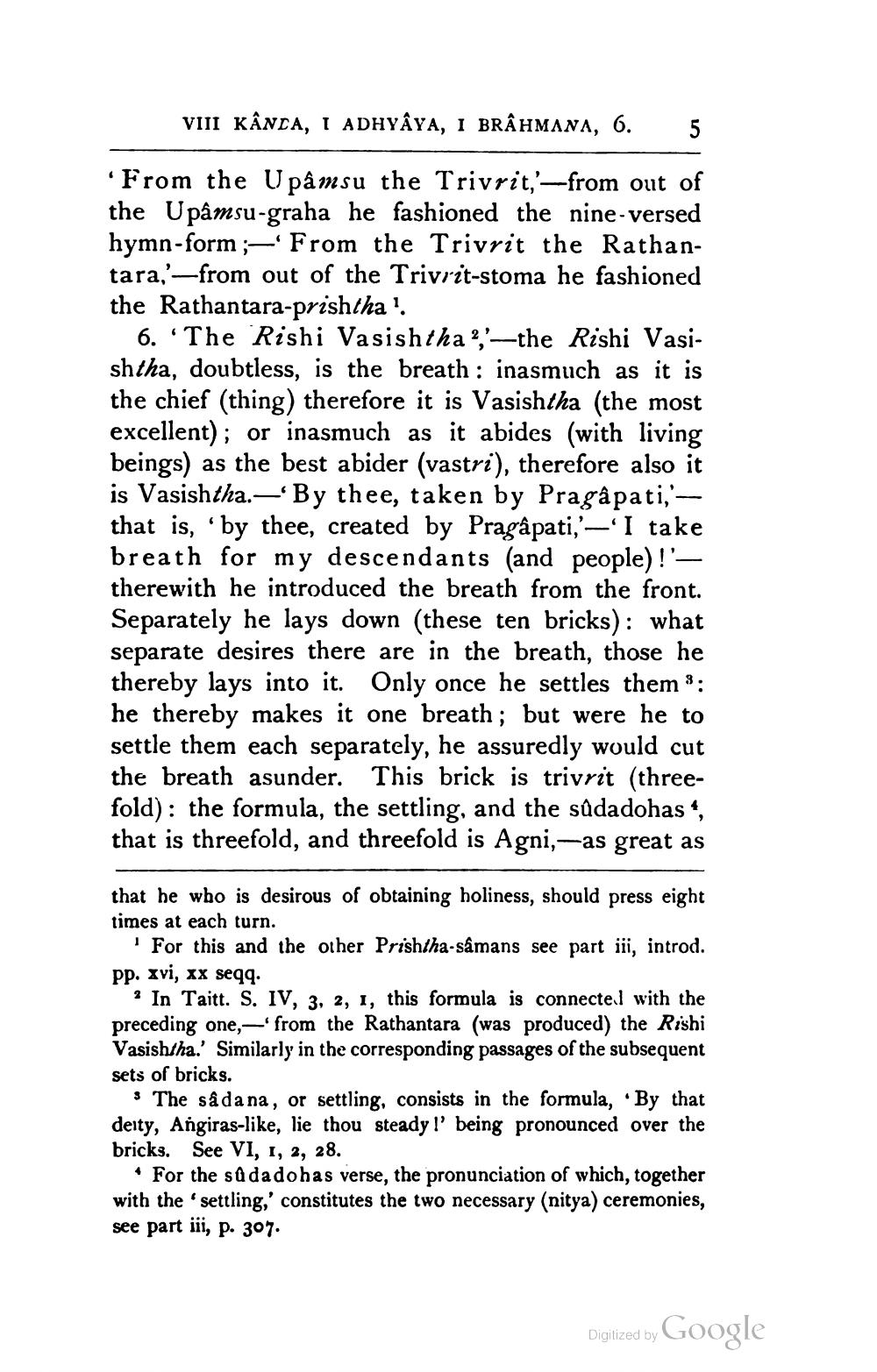________________
VIII KÂNCA, I ADHYÂya, 1 BRAHMANA, 6.
5
From the U pâmsu the Trivrit,'--from out of the Upâmsu-graha he fashioned the nine-versed hymn-form ;— From the Trivrit the Rathantara,'—from out of the Trivrit-stoma he fashioned the Rathantara-prishtha !.
6. 'The Rishi Vasishtha ?,'--the Rishi Vasishtha, doubtless, is the breath : inasmuch as it is the chief (thing) therefore it is Vasishtha (the most excellent); or inasmuch as it abides (with living beings) as the best abider (vastri), therefore also it is Vasishtha.—By thee, taken by Pragâpati,'that is, 'by thee, created by Pragâpati,'—'I take breath for my descendants (and people)!'— therewith he introduced the breath from the front. Separately he lays down (these ten bricks): what separate desires there are in the breath, those he thereby lays into it. Only once he settles them :: he thereby makes it one breath ; but were he to settle them each separately, he assuredly would cut the breath asunder. This brick is trivrit (threefold): the formula, the settling, and the sûda dohas", that is threefold, and threefold is Agni,-as great as
that he who is desirous of obtaining holiness, should press eight times at each turn.
For this and the other Prishtha-sâmans see part iii, introd. pp. xvi, xx seqq.
? In Taitt. S. IV, 3, 2, 1, this formula is connected with the preceding one,-' from the Rathantara (was produced) the Rishi Vasishtha.' Similarly in the corresponding passages of the subsequent sets of bricks.
s The sådana, or settling, consists in the formula, By that deity, Angiras-like, lie thou steady l' being pronounced over the bricks. See VI, 1, 2, 28.
For the sûdadohas verse, the pronunciation of which, together with the settling,' constitutes the two necessary (nitya) ceremonies, see part iii, p. 307.
Digitized by Google




